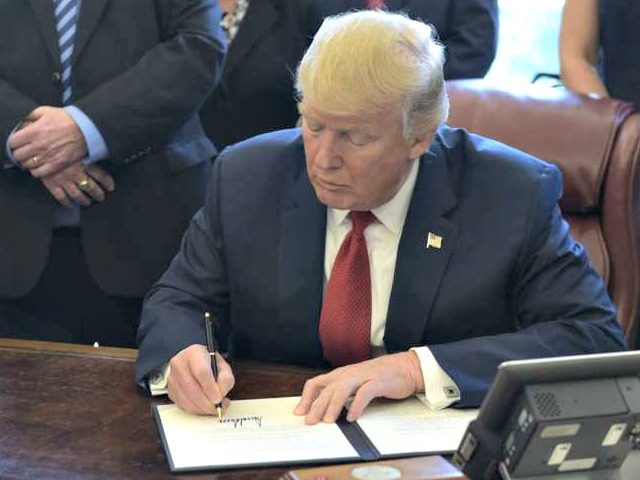President Donald Trump ordered the Treasury Department on Friday to examine two controversial powers given to financial regulators in the aftermath of the 2008 financial crisis, including a bailout authority widely favored by the biggest banks.
One of the memos Trump signed Friday takes aim at the “Orderly liquidation authority” or OLA, which authorizes the federal government to take over and wind down a failing financial firm. It instructs Treasury to examine whether OLA encourages excessive risk-taking or exposes taxpayers to liability. It also orders Treasury not to use OLAA while the review is underway.
OLA has been a target of conservative critics for years, largely because it permits federal regulators to attempt to deal with a failing financial firm outside of ordinary bankruptcy procedures. If regulators conclude that bankruptcy would cause serious financial disruption, they can invoke OLA to take over the failed firm and use taxpayer funds to keep it operating until it can be wound down in an orderly manner. Critics say this creates an implicit “safety net” for too-big-to-fail financial firms, creating moral hazard and encouraging excessive risk-taking.
Not surprisingly, OLA is one of the regulatory powers created by Dodd-Frank that the big Wall Street firms actually would rather keep in place. Because OLA would likely cushion the impact of a big bank’s failure on creditors and counterparties, it reduces the cost funding for the big banks. It may also give the biggest firms a competitive advantage over smaller competitors whose customers, counterparties, and creditors would still have to worry about the prospects of a formal bankruptcy.
Trade groups representing banks and other large financial institutions have lobbied against the repeal of OLA. In February, the chief executive of the Financial Services Roundtable told the Wall Street Journal that the trade group did not believe changes needed to be made to OLA.
Repealing OLA would create $15.2 billion in budget savings over 10 years, according to the Congressional Budget Office. Those savings could be used to “pay for” other Trump administration priorities, such as tax cuts and infrastructure spending. This also means that OLA could likely be repealed through the budget reconciliation process, making it immune to filibusters.
The second memo temporarily bars regulators from designating new non-bank financial companies as “systemically important financial institutions” or SIFIs. It orders a review of the process used to make these designations, which was harshly criticized by a federal judge last year. Regulators have designated the insurers American International Group, Prudential Financial, and MetLife as SIFIs, although MetLife won relief from the designation last year when a court decided that the process used to make the designation was arbitrary and opaque.
Critics of the rule charge that in addition to the problems with the designation process, the SIFI label may also create an implicit safety net for companies–the impression that they would be rescued in the case of failure. While the insurers and other non-bank financial companies would likely benefit from having the risk of SIFI designation–and the added regulatory burdens that come with it–lifted, this isn’t a change that has been sought after by the big banks that automatically qualify as SIFIs.

COMMENTS
Please let us know if you're having issues with commenting.